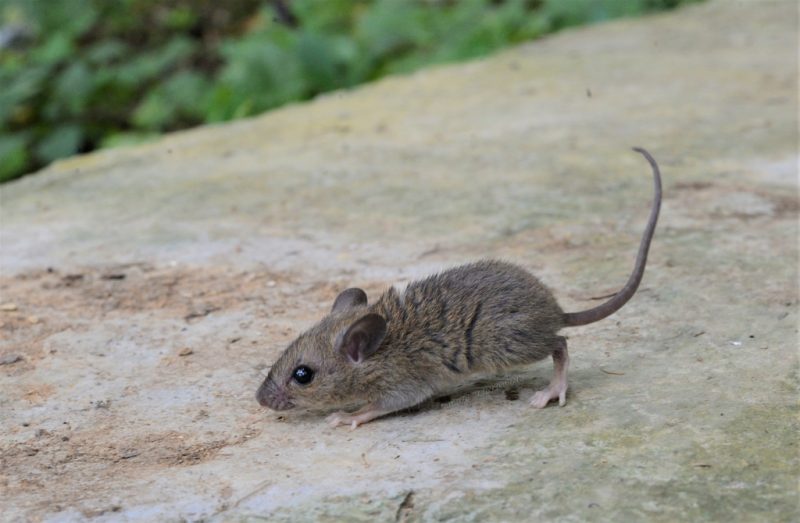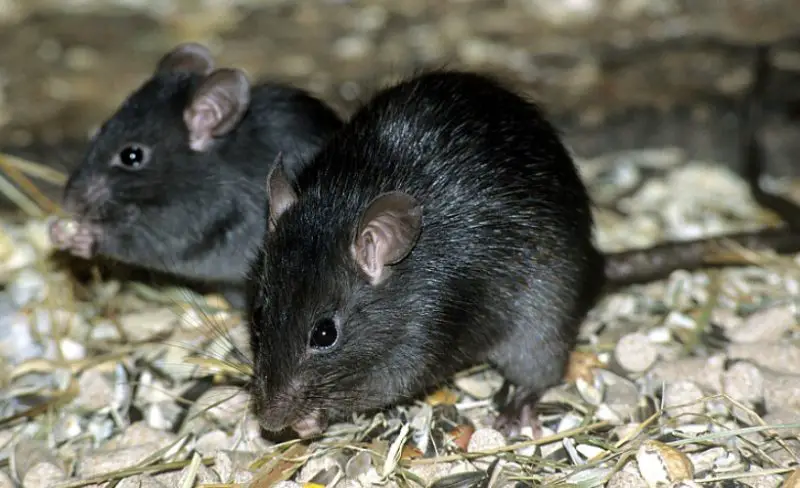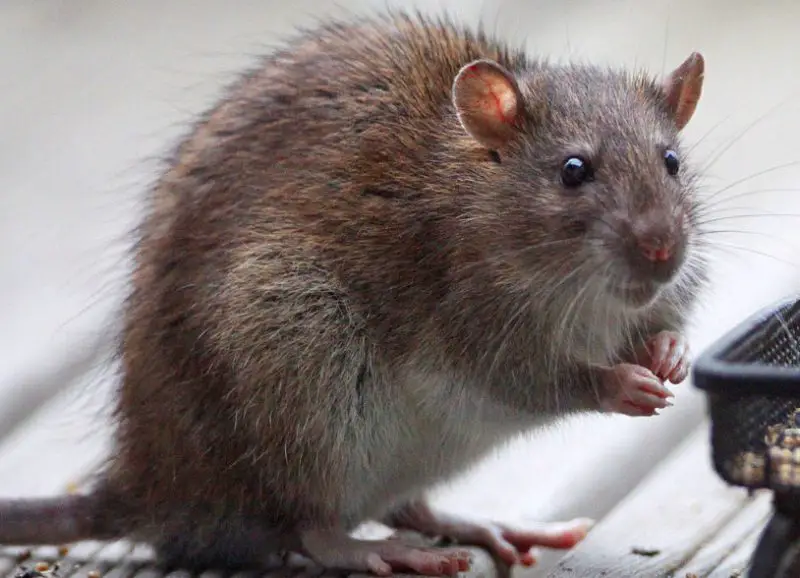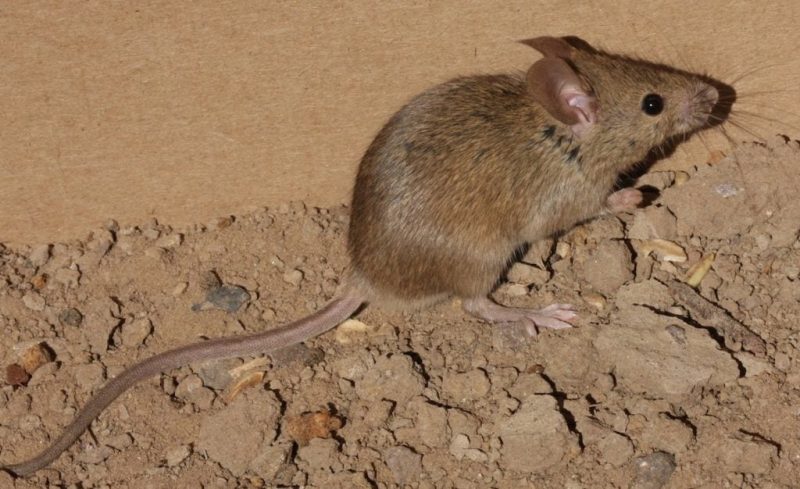Hawaii’s islands are home to several invasive rodent species that have arrived with humans over centuries. These small mammals are highly adaptable and can be found in forests, grasslands, and even urban areas across the islands.
While often unnoticed during the day, these rodents play a significant role in the islands’ ecosystems. They feed on seeds, fruits, insects, and bird eggs, impacting native wildlife and agricultural crops. Understanding their behavior and appearance can help residents and researchers identify and manage them effectively.
This guide highlights the four most common rodents in Hawaii: the Polynesian rat, black rat, Norway rat, and house mouse. Each species is described in detail, including identification tips, behavior, and habitat preferences.
Types of Rodents Found in Hawaii
Polynesian Rat (Rattus exulans)

The Polynesian rat is the smallest of the rat species found in Hawaii and is thought to have arrived with the earliest Polynesian voyagers. Adults typically measure around 4–6 inches in body length, with a tail that is about the same length as their body. They are slender with relatively large ears and eyes, and their fur ranges from light brown to grayish-brown, often with a lighter belly. This rat has a pointed snout and a more delicate appearance compared to the larger rats introduced later.
In terms of behavior, the Polynesian rat is nocturnal and highly adaptable. It prefers drier habitats such as grasslands, shrublands, and agricultural areas, but it can also be found near human settlements. In Hawaii, it thrives on smaller islands and upland areas where it has less competition with the larger rat species. It is an agile climber and can easily move through vegetation, making it difficult to control.
The diet of the Polynesian rat is highly varied, consisting of seeds, fruits, insects, and small invertebrates. In Hawaii, it has become a serious pest because it feeds on native plants, bird eggs, and even agricultural crops. Its feeding behavior has contributed to the decline of native species, particularly ground-nesting seabirds. Because of its omnivorous nature, it plays a destructive role in the fragile island ecosystem.
Breeding occurs year-round in Hawaii’s warm climate, with females capable of producing several litters per year. Each litter usually contains 4–6 young, and the juveniles grow quickly, reaching sexual maturity in just a few months. Their rapid reproduction allows populations to expand quickly, especially in areas where food is abundant. This reproductive success, combined with their adaptability, makes the Polynesian rat one of the most persistent invasive rodents in Hawaii.
Black Rat (Rattus rattus)

The black rat, also known as the roof rat, is one of the most common and widespread rodent species in Hawaii. Adults measure about 6–8 inches in body length with a long tail that is often longer than the body. They have large ears, a pointed snout, and sleek dark brown to black fur, though some may appear gray. Unlike the smaller Polynesian rat, the black rat is more robust and agile.
This species is highly arboreal and is often found in trees, attics, and rooftops—hence its name “roof rat.” In Hawaii, it inhabits both urban and rural areas, including forests, agricultural fields, and residential zones. They are excellent climbers, which makes them particularly dangerous to native bird populations that nest in trees. Their preference for elevated areas distinguishes them from the ground-dwelling Norway rat.
Black rats are opportunistic feeders, consuming fruits, seeds, grains, and insects, but they also prey on bird eggs and chicks. In Hawaii, they have been one of the major culprits behind the decline of native forest birds, especially those that nest in tree cavities or branches. They also damage crops such as sugarcane, macadamia nuts, and tropical fruits, creating significant economic losses.
Breeding in Hawaii occurs throughout the year, with each female capable of producing multiple litters annually. Litters usually contain 5–8 pups, and juveniles reach maturity within a few months. Because of this rapid breeding cycle, black rat populations can grow quickly, especially when food sources are abundant. This reproductive ability, combined with their climbing skills, makes them one of the most destructive invasive rodents in the islands.
Norway Rat (Rattus norvegicus)

The Norway rat, also called the brown rat, is the largest rodent species found in Hawaii. Adults typically measure 9–11 inches in body length, with a tail that is shorter than the body. They have a stockier build than the black rat, small ears, and a blunt snout. Their fur is coarse and brownish-gray, with a lighter underside. These physical traits make them easy to distinguish from the more slender and agile black rat.
In Hawaii, Norway rats prefer ground-level habitats such as sewers, garbage dumps, fields, and coastal areas. They are less adept climbers than black rats, but they excel at burrowing and are often found in holes, basements, and low-lying structures. Their association with human settlements makes them one of the most visible rodent pests in urban environments across the islands.
Feeding habits of Norway rats are omnivorous but lean heavily toward scavenging human food waste, grains, and crops. In Hawaii, they often target sugarcane fields, vegetable gardens, and stored food supplies. They are also known to eat fish and small animals when available, making them a significant threat to local ecosystems. Their destructive feeding and gnawing behavior cause extensive damage to buildings, electrical wiring, and stored goods.
Reproduction is prolific in Hawaii’s tropical environment, with females capable of producing up to seven litters per year. Each litter may contain 6–12 pups, and young rats reach maturity in about three months. This rapid reproduction, combined with their adaptability, ensures that Norway rat populations remain high throughout the islands. Their presence has severe ecological and economic consequences, making them a persistent challenge for both wildlife conservation and human habitation.
House Mouse (Mus musculus)

The house mouse is the smallest rodent species in Hawaii, typically measuring 2.5–4 inches in body length with a tail of similar size. Its fur color ranges from light brown to gray, with a lighter belly. It has large, rounded ears, a pointed snout, and small black eyes. Despite its small size, the house mouse is one of the most widespread rodents globally and thrives in human-dominated environments.
In Hawaii, house mice are commonly found in homes, warehouses, agricultural fields, and grasslands. They are highly adaptable and capable of living in a variety of habitats, from coastal areas to higher elevations. Their small size allows them to hide easily within structures, making them difficult to eradicate. They often live close to humans, depending heavily on human food sources and shelter.
House mice feed on grains, seeds, fruits, and household food scraps. They are notorious for contaminating food supplies and can spread diseases through droppings and urine. In Hawaii’s natural landscapes, they compete with native wildlife for food resources and may prey on insect populations, contributing to ecological imbalance. Their presence in agricultural fields also leads to crop damage, particularly in corn, grains, and fruit orchards.
Reproduction in house mice is exceptionally fast, with females capable of producing litters every 20 days under favorable conditions. Each litter may have 5–10 pups, and the young reach reproductive maturity in just six weeks. This rapid reproductive cycle allows house mouse populations to expand quickly, especially in areas with abundant food. In Hawaii, their persistence and adaptability make them one of the most challenging rodents to control.
Best Time and Place to See Rodents in Hawaii
Spotting rodents in Hawaii is not quite the same as birdwatching or observing native wildlife, since these animals are invasive pests rather than species that people usually seek out. Still, they are widespread across the islands and can be encountered in both urban and natural environments. Their nocturnal habits make nighttime the best time to notice them, as they become more active in search of food once the sun sets. Around dusk and dawn, they are often seen scurrying across fields, along fences, or near human dwellings.
In terms of location, Polynesian rats are most likely to be found in upland areas, grasslands, and dry shrublands, especially on smaller islands where they face less competition. Black rats prefer elevated spaces such as trees, rooftops, and attics, so forested areas and agricultural orchards are common places to encounter them. Norway rats, being ground dwellers, are frequently seen near garbage dumps, sewers, harbors, and low-lying coastal regions. House mice, on the other hand, are the most widespread, often found inside homes, barns, warehouses, and crop fields.
For those studying or monitoring rodent activity in Hawaii, agricultural zones, residential neighborhoods, and forest edges are among the most reliable environments to observe them. While they are not species people typically enjoy seeing, understanding where and when these rodents are active is important for managing their populations and reducing their ecological and economic impact.
FAQs About Rodents in Hawaii
What types of rodents are found in Hawaii?
Hawaii is home to four main invasive rodent species: the Polynesian rat (Rattus exulans), black rat (Rattus rattus), Norway rat (Rattus norvegicus), and house mouse (Mus musculus). There are no native rodents on the islands; all of these species were introduced by humans over the centuries.
Are rodents in Hawaii harmful to native wildlife?
Yes, rodents in Hawaii are a major threat to native plants, birds, and insects. They eat seeds, fruits, and bird eggs, which disrupts natural ecosystems. Black rats, in particular, prey on tree-nesting birds, while Polynesian rats have contributed to declines in seabird populations on smaller islands.
Where can rodents be most commonly seen in Hawaii?
Polynesian rats are often found in upland areas and dry shrublands. Black rats prefer trees, rooftops, and forested areas. Norway rats stay near ground-level habitats such as sewers, fields, and coastal zones. House mice are widespread and frequently found inside homes, barns, and crop fields.
When are rodents most active?
Rodents in Hawaii are mainly nocturnal. They are most active at night, especially around dusk and dawn, when they forage for food. Observing them during these times increases the chance of spotting them in natural or urban environments.
How fast do rodents reproduce in Hawaii?
Rodents in Hawaii reproduce very quickly due to the warm climate. Polynesian rats and black rats can have several litters per year with 4–8 young each, while Norway rats can have 6–12 pups per litter and house mice up to 10 pups. Young rodents reach sexual maturity in just a few weeks to a few months, enabling populations to grow rapidly.
Can rodents be controlled in Hawaii?
Yes, rodent populations can be managed through trapping, baiting, and habitat modification, but eradication is challenging because of their rapid reproduction and adaptability. Conservation programs often focus on protecting native birds and plants from rodent predation.
Do rodents carry diseases in Hawaii?
Yes, rodents can carry diseases that affect humans, livestock, and pets. Norway rats and house mice are particularly known for spreading bacteria and parasites through droppings, urine, and direct contact. Proper sanitation and pest control are important to reduce health risks.






